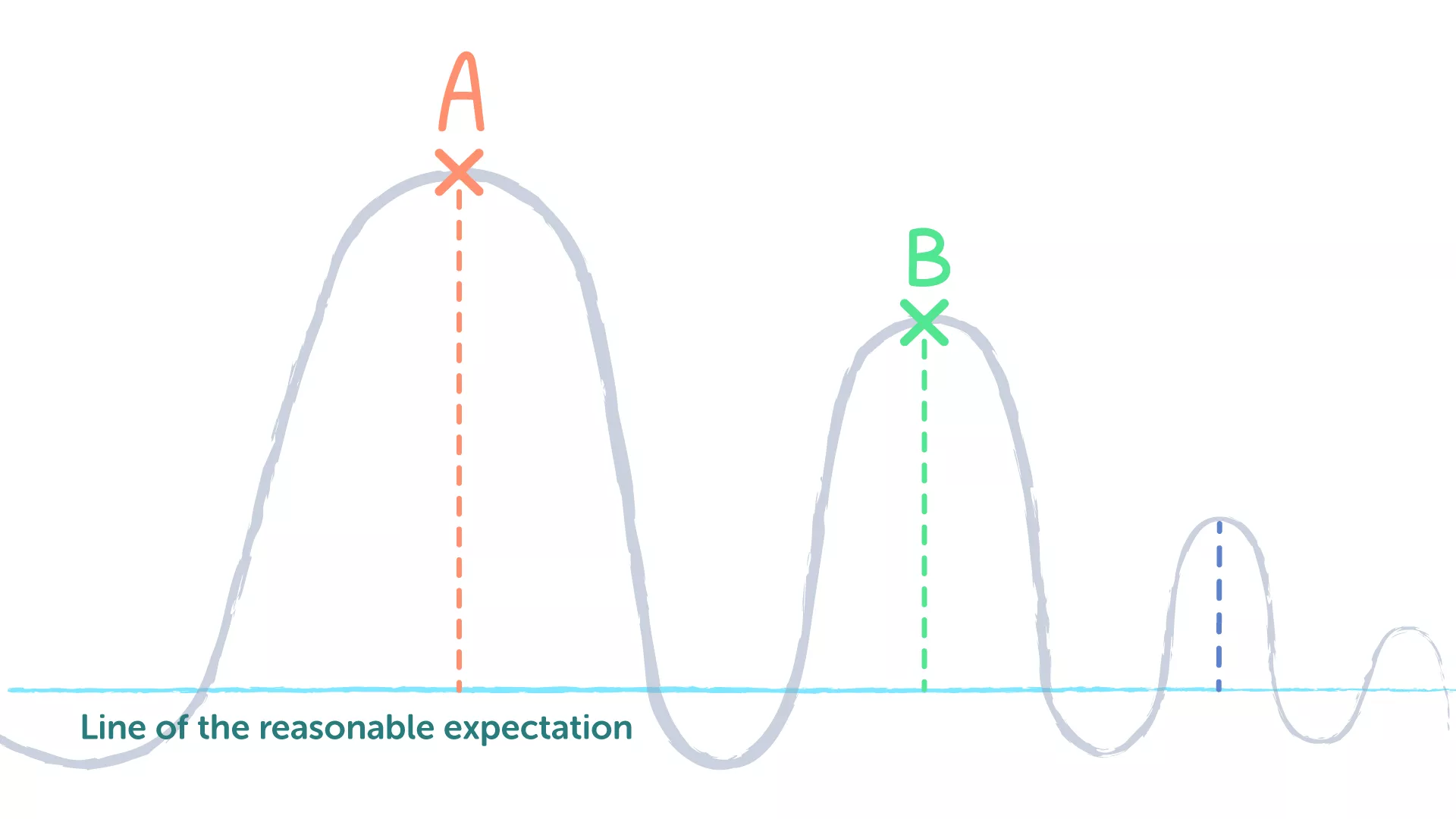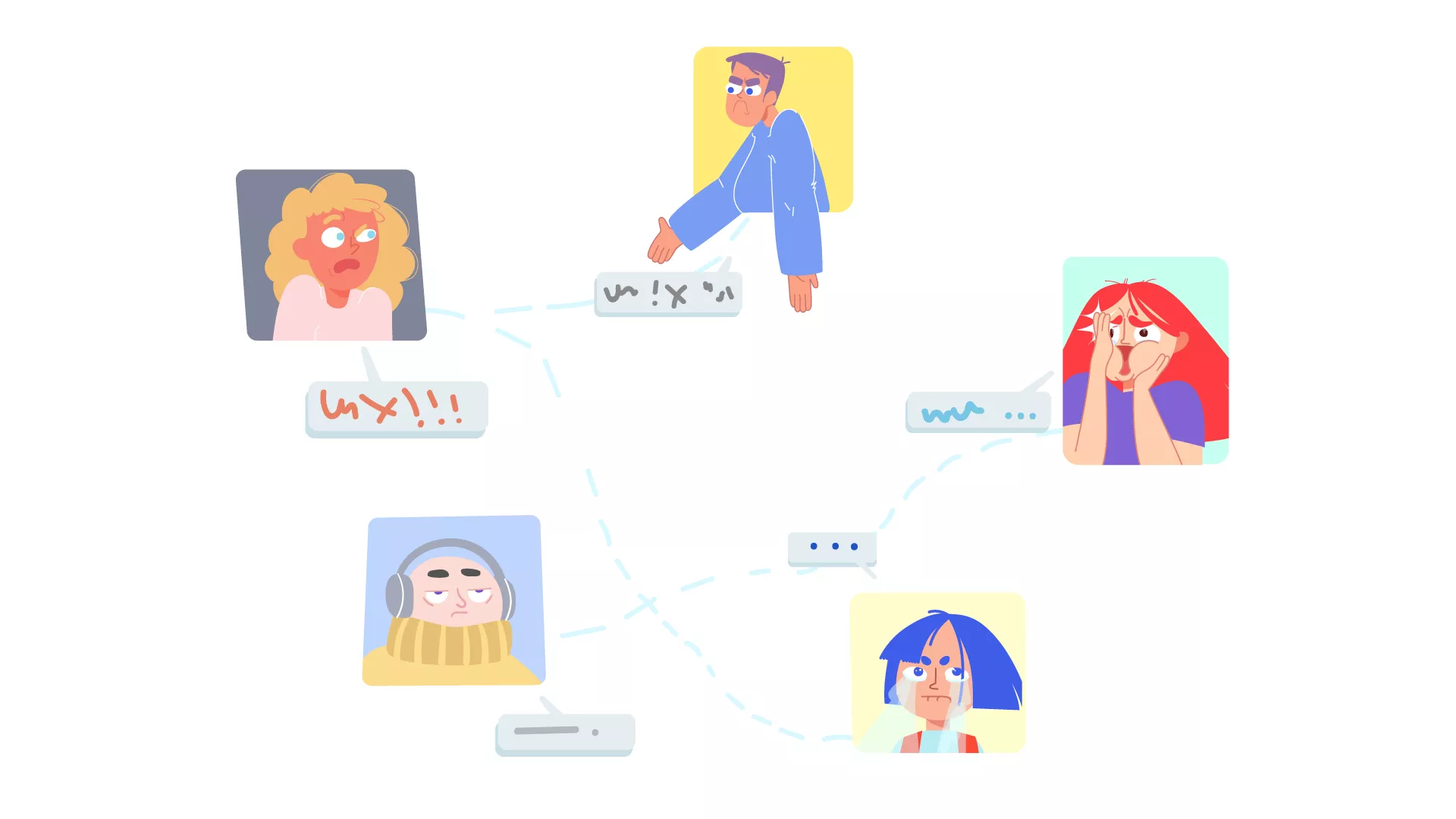If you want to make it in any creative industry, client communication is the key.
Whether you are a starting boutique agency, with a team of 3, or you’re a part of an established firm with 20+ international branches, if client communication is your weak spot, a complete set of all the other professional and creative skills won’t help you much.
Today, we will take a look at the most common communication pitfalls that can drive clients away. By the time you are done reading, we guarantee you’ll become a little savvier in how you interact with your clients.
While preparing this article, we had an opportunity to interview Marlene Sharp, a founder and an executive producer of LA-based entertainment consultancy, Pink Poodle Productions. She also serves as Head of IP Strategy and Acquisitions for Rainshine Entertainment. We asked her about the most common communication fails she encountered during her career, and how they could have been avoided:
In my opinion, 3 of the most common client communication pitfalls:
1) Barriers among/between native speakers of different languages
2) Service providers and their clients have different outcome expectations. And in many cases, these are not articulated/discussed at the outset
3) Project scope of work changes in mid-process, and no one addresses that change until after costs have ballooned…
Frequent dialogue is helpful to mitigate communication challenges. It is important to document conversations. And itis equally crucial for stakeholders to agree on the meaning behind those discussions.
Talking about client communication, we can divide it into two components:
- Communication pitfalls during the project itself
- Fails during the client meeting
Let’s have a look at the most common mistakes that occur during each of them.
Communication during the project
1. Absence of common communication space
Let’s say you’re at the stage of developing the main character and the deadline for the final version is in two weeks.
You create the first version and send an email requesting all the stakeholders to review it and give you some notes. Your client answers you right away by email. The client’s assistant sends you a text. Another team member simply throws a paper note at you from the other corner of the office. Your boss sends you a voice message. The copywriter DMed you on Instagram.
You took note of all the incoming comms. And then realized that the changes that your client asked you to do were contradicting the messages from your boss, your copywriter, or any other interested party.

Chances are, your boss hasn’t seen your client’s email before sending his feedback, and the copywriter hasn’t seen your teammate’s paper note.
So, you start addressing all the feedback you received. And just like that, an endless thread of emails, texts, DMs, and calls starts to swallow a big chunk of your time.
Even after consulting with everyone and reaching some conclusion on the changes that should be made, you still have to organize everything perceptibly. Not to mention everyone has wasted their time. If this situation is reoccurring, it’ll create an unnecessary loophole in your workflow.

Find the right feedback management tool
While everybody uses such different communication means, it’s nearly impossible to get all the feedback organized and all the ideas incorporated quickly.
Unless you have a single place where all the stakeholders can express their thoughts on the matter, and all the edits are neat and, preferably, time-coded.
A tool that allows you to funnel all communication into a single, accessible location – would be a great way to end this struggle. It will save a lot of time and energy you would otherwise spend trying to keep up and organize all the communication.
together with Krock.io!
Check out our comparison chart for the most used online collaboration tools.
2. Making the client wait

Time is gold. And a timely response is the golden key to keeping your clients happy.
The policy to respond to every email in 24 hours is the ideal scenario. Even if you don’t have the answer for the client yet, or you are still working on the matter, – that’s exactly what you should put in the response. Keeping silent until you can provide a detailed answer or present a completed task – is never a good strategy.
Often, there are multiple definitions of commonplace terms. For example, in a recent HOLLYWOOD REPORTER article about mega-producer Scott Rudin, there is an anecdote about the shifting subtext of the word immediately!
3. No Follow-ups
Just as Marlene mentioned, it is imperative to document conversations. Now, you definitely shouldn’t tape Zoom calls without informing your client first. But, an email with a recap of your last meeting is always a great way to keep a communication record. Be sure to include not only the summary of your last conversation but also the next steps that the project will undertake.
A recap maintains the progress chronology, as well as lets all the stakeholders go through the decisions made during the work process. It is also convenient for your team: you can always double-check every detail. And, if you work with several clients on a similar media product, you can even predict their needs, and therefore, automate your workflow a little.
Fails during the client meeting

Now, let’s go over the most common mistakes made during the meetings with your client and how to avoid them.
1. Poor presentation skills

Here, it’s important to remember that not only what you say is perceived by your clients, but also your posture, gestures, tone of voice, and the fluidity of your speech. We tend to trust more people that sound confident and stern, yet considerate; and those, who can stand their ground, yet do not strike as stubborn.
Learning the basics of non-verbal communication might be quite useful in this department. For example, to communicate clearly and confidently, adopt proper posture. Avoid slouching, folding your arms, or making yourself appear in any way smaller than you are. Instead, fill up the room you are given, maintain eye contact, and (if appropriate) move around the space. Check out this list of books on nonverbal communication.
The Mirror Effect
One of the useful tools for pitching your ideas is called the Mirror Effect.
It is literally what it sounds like! Numerous studies have shown that when you mimic the posture, gestures, or pose of your opponent, they are more likely to consider you likable.

However, in the era of Zoom calls, we can use it with a twist – mirroring the client in our presentation speech, rather than appearance. When going over the brief and highlighting the main specs your client provided, use these exact terms while pitching.
For instance, your client asked for the main animation character to look “silly, but adorable”. When you are going over the character development, highlight the features that make him exactly “silly, but adorable”.
It’s often easier to spot a great idea if you have many to choose from. Even if the suggestion seems absolutely off the point. When you combine the quantity of the ideas with their diversification – that’s when the magic happens, and you’ve got a pool of sundry concepts to choose from!
2. Closing the deal too late
Paula Scher, the famous New Your graphic design legend, claims that there is a perfect time to end a meeting with a client. She starts in one of the episodes of Abstract, where she also talks about “The appreciation curve” your clients go by during presentations.

Line of a reasonable expectation that everyone has once the meeting starts.
You begin to present the concept, stylistic decisions, or first character drafts, and your client is getting enthusiastic: you are rising above the level of reasonable expectation. The client is asking questions, you can see the fiery look in their eyes, and then, you reach point A on the graph. This is the point of the highest appreciation you will get for this presentation.
Once you are at that point, it comes an inevitable moment when someone is going to make a rebuttal to your presentation. Here you will fall slightly under the level of reasonable expectation. Psychologists would say that it happens because the client subconsciously wishes to feel that they have contributed to the creation process. You grab it back, and you make some concessions. And you are going back up till you reach point B – not as high as A, but still good, and, anyway, this is now as high as you ever going to get.
Point B is the moment when you should throw all your persuasion skills to close the meeting. Because after this point, there will come another counter-rebuttal to your offer, the appreciation line will go down below the reasonable level of expectation and then come back only nearly above it. This will continue until you reach a sudden death.
3. The Above Average Rule
Following the Above Average Rule is always a good strategy.
Just like on Paula Scher’s client appreciation curve, you don’t need to deliver over-the-top work every single time. However, if you manage to part with your client with him having a sense that you did more than they expected of you, – that is your best advertisement! And on the contrary, given that we live in a very connected world, where word-of-mouth referrals are the equivalent of business gold, even one negative client experience can leave an adverse effect on your bottom line.
To conclude, we asked Marlene what would be a perfect tool to use for the client review & approval cycle:
The perfect tool would be able to dispense cafe mochas at will. But I’ll settle for streamlined workflow communication in the meantime! – Marlene says.
Well, we can’t promise that Krock will deliver you mochas any time soon, but you can definitely check out streamlined workflow communication from your goal list! And if you have any doubts, schedule a compromise-free demo call here.
We sincerely hope that this article will help you improve the communication process with your client and content review cycle, make your workflow a little smoother, and deliver your projects faster.
